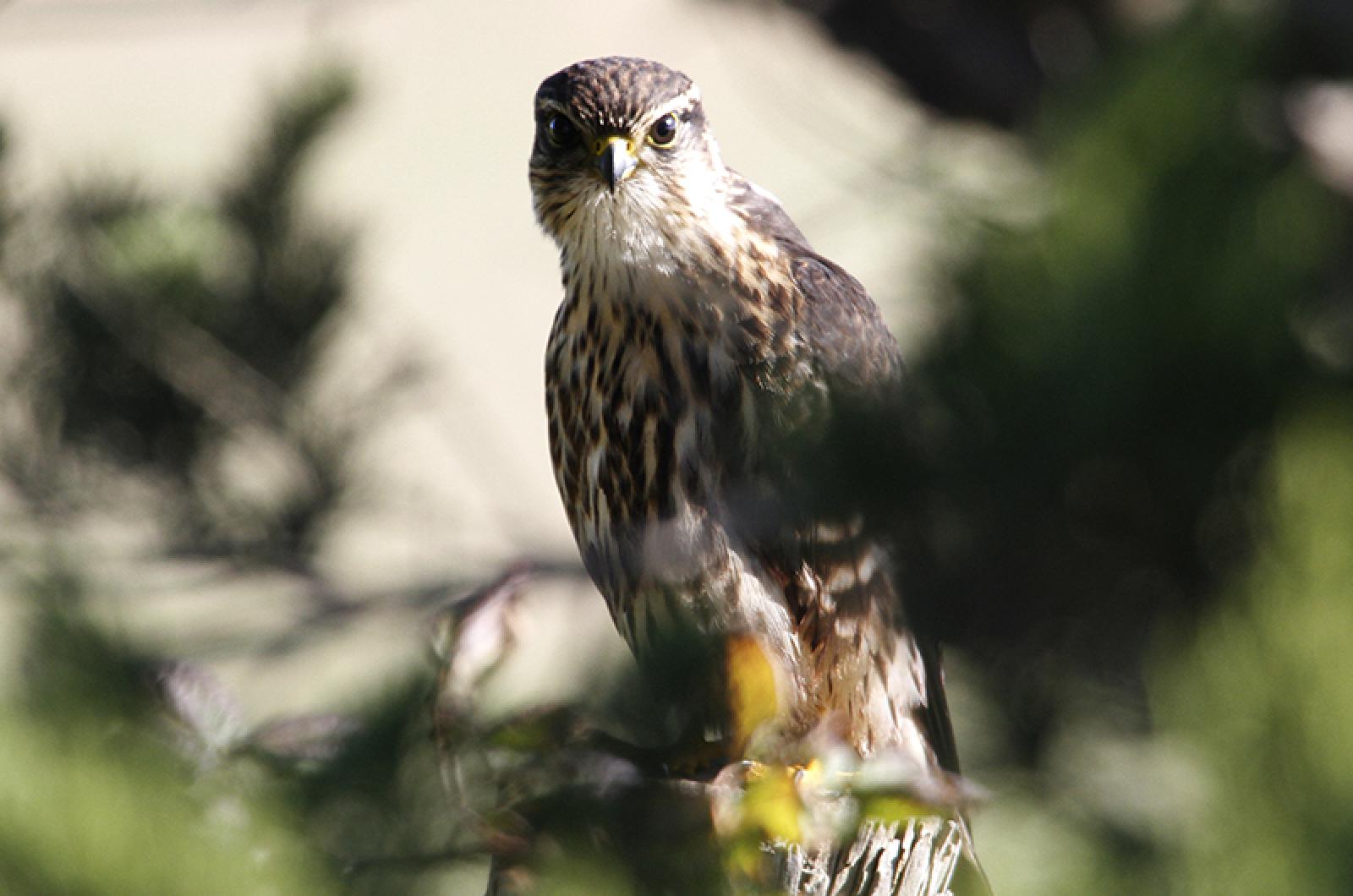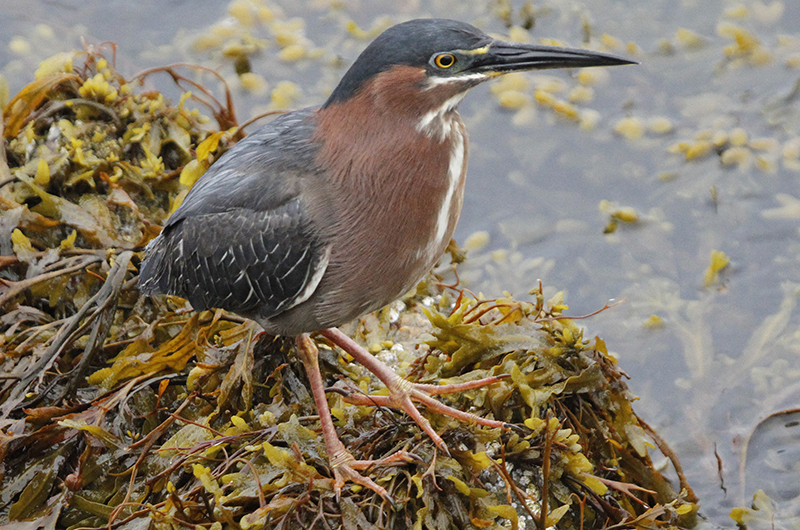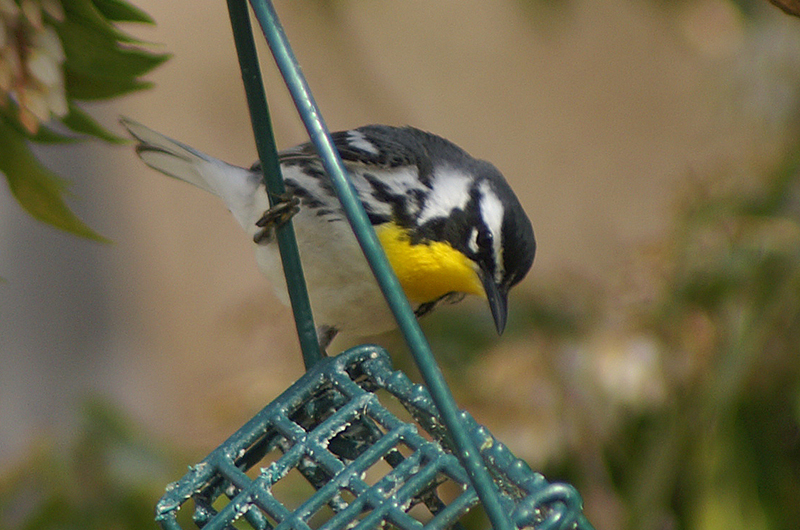We have had our share of bad weather in April. Sure, it is spring on Martha’s Vineyard but we need more days of warmth, sun and no wind. Songbirds migrate at night, and with favorable conditions migration goes full speed ahead, especially with a light southwest wind.
There were such favorable conditions last Saturday night. And there were new arrivals the next day.
Phil Edmundson heard and saw the first common yellowthroats (five of them) spread through the woodlands near the southern end of Watcha Pond on April 26. And Mike Tinus watched and listened to the first great crested flycatcher of the season that day. The first rough-winged swallow of the season was spotted by Bob Shriber at Quansoo Farm on April 26. These species were not present the day before.
The westerly winds were relatively light on the evening of April 22, at about 10 to 15 miles per hour. A lot of migrants showed up the next day. The most notable of these migrants were an upland sandpiper spotted by Danielle Bellany in a small field off Lobsterville Road, and a yellow-throated warbler that showed up at Kevin Nydam’s feeders. The former species is not seen often and is typically found in the large agricultural fields of Katama, while the latter species (a striking yellow, black and white warbler) is a mostly southern species that we see maybe once per spring. Bob Shriber saw it again on April 25.
Less unusual species were also found. An eastern meadowlark was found at Herring Creek Farm on April 23 by Michael Whittemore. The same day Ann Floyd spotted an eastern kingbird at Tom’s Neck, and four eastern willets were seen by Lanny McDowell near the Eel Pond Boat Ramp. On April 26, Luanne Johnson spotted another willet in the marshes at the western end of Mattakesset Bay.
The first eastern towhees showed up a week or so ago, but now they are getting rather common. Increased numbers of this soon-to-be-common species were found on April 26. Luanne Johnson found eight towhees in Katama. Bridget Dunnegan and Sea Williams found two in the northeast corner of the State Forest, Danielle Bellany spotted four of them near Wapatequa Woods (along with a golden-crowned kinglet), and Mike Tinus and I found five at Waskosim’s Rock Reservation. Other recent reports of towhees are from feeders reported by Sioux Eagle, Catherine Deese, Gabrielle Whitcombe, Albert Fischer and Pat Ingalls.
These observations show that migrants arrived with the favorable weather preceding April 23 and April 26. They tend not come this far east — the Cape and Islands jut eastward into the Atlantic Ocean — when they have to fly into strong northerly or easterly winds.
Bird Sightings
Of course sometimes birds appear to show up during bad weather, but how much of this is be because nobody is there to see them when they arrive. The white-eyed vireo Allan Keith spotted was hunkered down in the woods of the Gay Head Morraine on April 25, but did it really fight its way here into the strong northerly winds of the previous night? How long was it here before it was sighted?
Lisa Maxfield found the first green heron of the year at Brush Pond on April 21.
A ruddy turnstone spotted by Bob Shriber at Katama Farm on April 24 is undoubtedly a migrant, while the lesser black-backed gull he saw the same day could well be an over-wintering bird.
Hummingbirds are continuing to arrive. They have been seen by Sarah Carr, Karen Welch, Lanny McDowell and Pat Ingalls.
A few of our wintering waterfowl are still around, most notably bufflehead and red-breasted mergansers. They have been observed by Luanne Johnson on April 26 at Mattakesset Bay, Francesca Zeta at Sheriff’s Meadow Sanctuary on April 25, Mariah Ben David at Katama on April 25, and John Nelson saw buffleheads in Oak Bluffs Harbor on April 26. Other lingering waterfowl include a female common merganser on Watcha Pond spotted by Phil Edmundson on April 25. the greater white-fronted goose that has been here for two months was sighted again by Jeff Bernier on April 23. Both Bob Shriber and Luanne Johnson saw it again on April 26.
Merlins are still around as well. Bob Shriber spotted one at Katama on April 23. Jessica Burnham also spotted one that day, and Gregory Pattison saw one in his yard on April 22. Another predator still around is the bald eagle. I heard that a pair of eagles were observed flying over Squibnocket Pond on April 23, and an adult bald eagle at Watcha Pond was spotted by Phil Edmundson on April 26.
Norma Holmes has seen a variety of migrant songbirds in the Katama area: tree swallows, chipping sparrows, robins, a phoebe and a pine warbler. She also reports seeing gannets a few days ago by the seawall near Farm Pond.
Steve and Christina Miller heard a great horned owl calling near Pennywise Path on April 21.
Tim Johnson spotted a family of recently hatched Canada geese on April 22. An incubation period of 32 days means that these geese started incubating their eggs on March 22.
Last, but not least, MassAudubon’s Felix Neck Sanctuary will be holding their Bird-at-home-a-thon on May 15 to 16. Go to MassAudubon’s bird-a-thon website to sign up to count birds or to sponsor other birders to support Felix Neck.
Robert Culbert is an ecological consultant with Nature Watch LLC living in Vineyard Haven.










Comments
Comment policy »